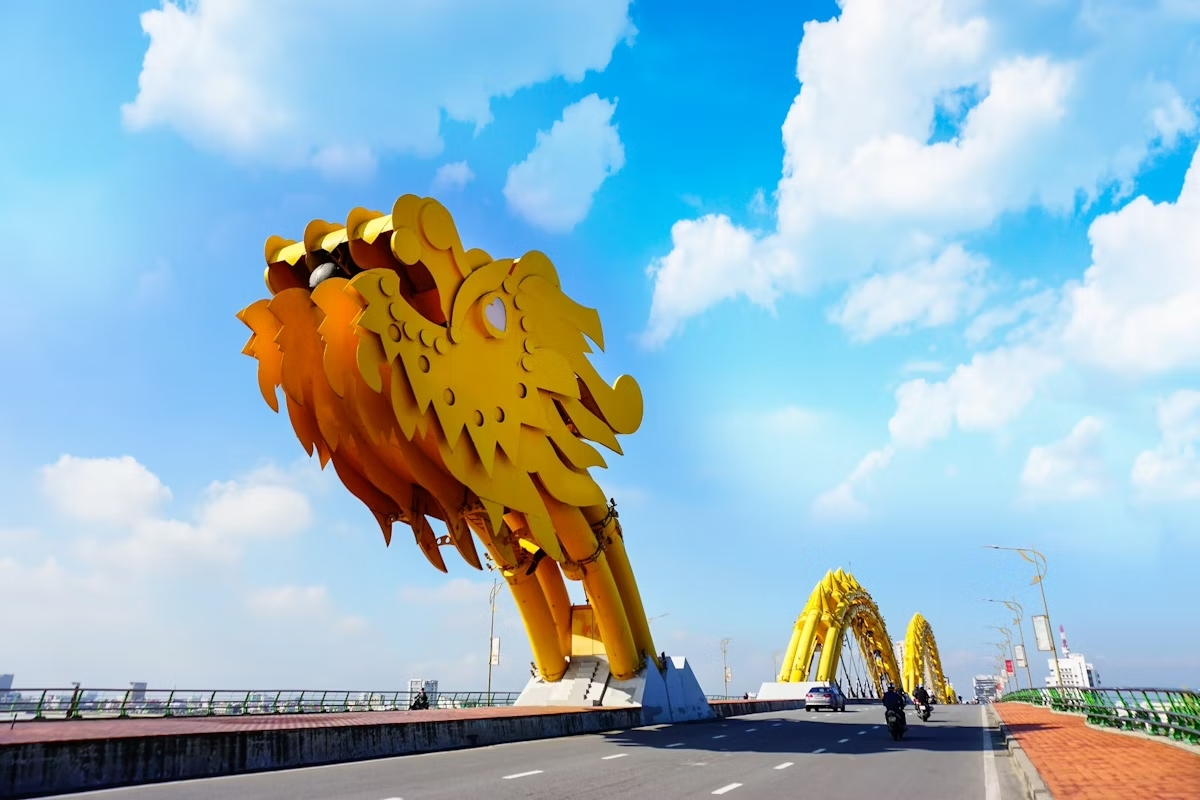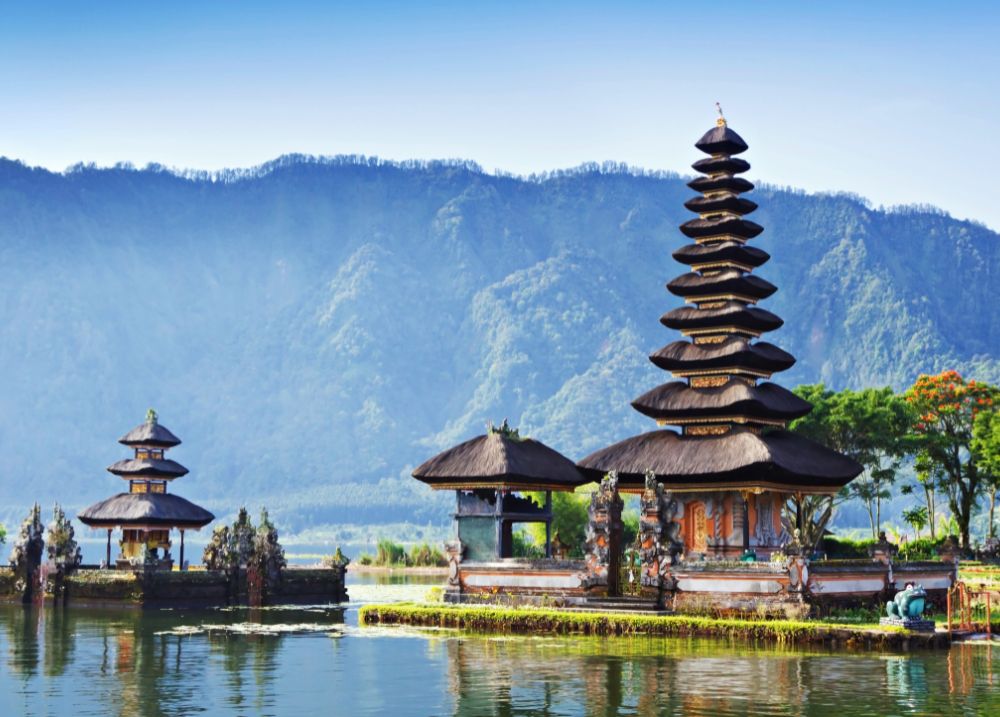Vietnam Culinary Tours: A Food Lover’s Journey Across 3 Regions of Vietnam
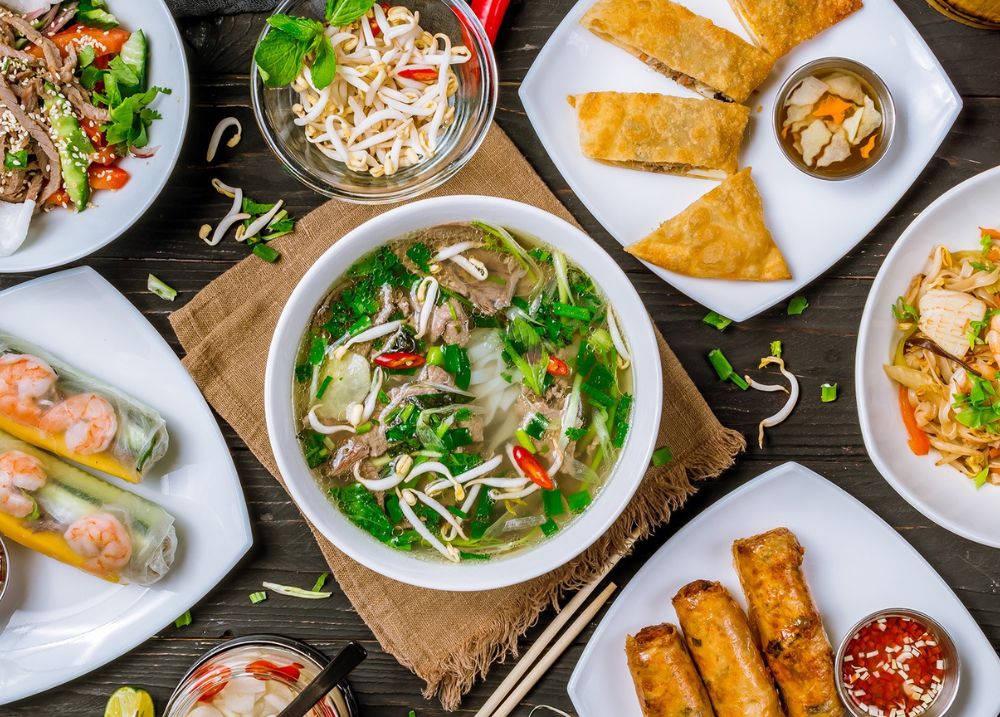
Vietnam has a diverse culinary scene, yet each region offers distinct flavors and textures. Taking Vietnam culinary tours allows you to savor authentic dishes, experience local traditions, and even discover refined gastronomic treasures. So, now let’s explore this flavorful journey.
Why Choose a Culinary Tour in Vietnam?
- Cultural Immersion Through Food
When you go on Vietnam culinary tours, not only do you get to taste fantastic food, but you also have a chance to learn about the country’s culture. Travelers may learn about the customs and tales behind each meal by going to busy markets, taking culinary courses, and eating in people’s homes. These experiences go beyond just being a tourist, and they make you really appreciate Vietnam’s rich food culture.
- Variety by Region
Vietnam’s food scene is full of different tastes, with each location having its own particular flavor. In the north, recipes are known for being delicate and balanced, with a focus on fresh herbs and mild broths. The central area has stronger tastes, with spicy and fragrant dishes that show off its regal culinary legacy. The south, on the other hand, has sweeter flavors that include tropical fruits and a mix of herbs. This diversity makes Vietnam culinary tours particularly rewarding for food enthusiasts.
- Curated, Hassle-Free
Choosing a guided food tour in Vietnam guarantees a smooth and rewarding trip. Expert guides, who are typically locals with a lot of experience, lead guests to hidden treasures and real restaurants. Participants may focus on the sensory pleasures of the trip without having to worry about logistics like transportation and bookings. This makes Vietnam culinary tours both easy and unforgettable.
> Explore More: Thailand vs Vietnam – Best Culinary Destination for Food Lovers
Tasting Vietnam: Regional Highlights & Must-Do Activities
Northern Vietnam – Hanoi
Street Food Delights
Popular with Vietnam culinary tours, Hanoi’s Old Quarter is a colorful mix of many food cultures, and each alley has its own unique taste. Among many exquisite dishes, Pho is a very popular fragrant noodle soup in Vietnam that can’t be missed. The broth is cooked for hours with spices and herbs, making a rich basis for delicate slices of beef or chicken served with fresh herbs and lime. Pho Bat Dan (49 Bat Dan, Hoan Kiem, Hanoi) serves a classic version of this famous cuisine for a real experience.
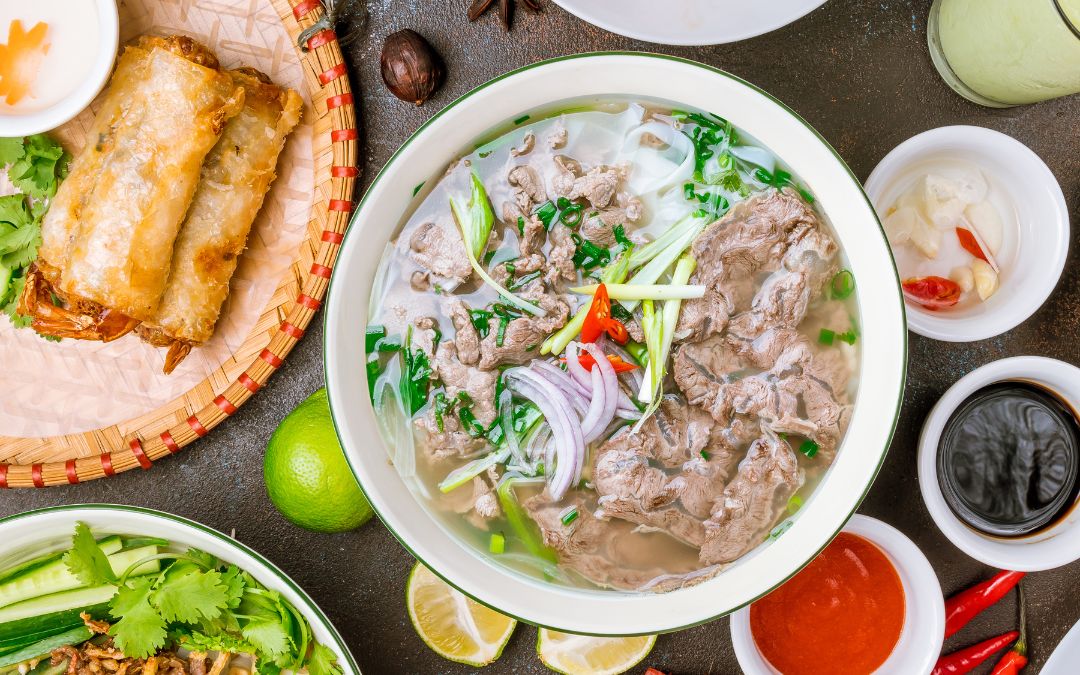
Another local favorite is Bun Cha, a dish featuring grilled pork patties served with vermicelli noodles and a side of dipping sauce. The smoky aroma of the grilled meat, combined with the tangy sauce, creates a harmonious balance of flavors. Bun Cha Huong Lien (24 Le Van Huu Street, Hai Ba Trung, Hanoi) gained international fame after Anthony Bourdain dined there with President Obama.
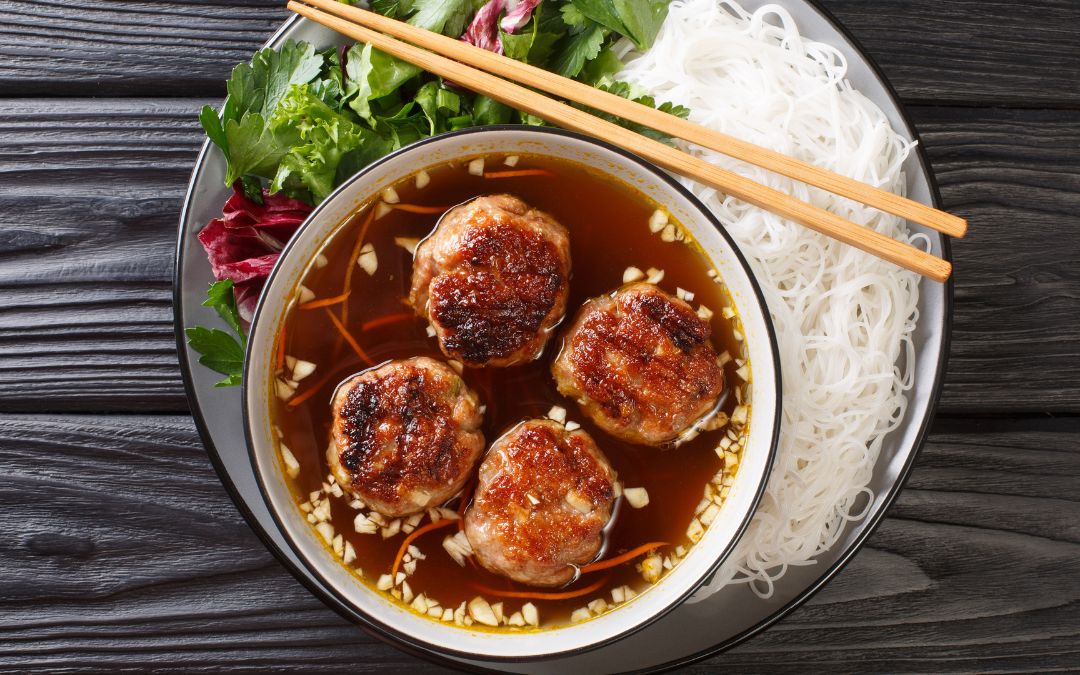
For a hearty breakfast, Xoi (sticky rice) vendors line the streets, offering various toppings such as mung beans, fried shallots, and boiled eggs. Xoi Yen (35B Nguyen Huu Huan, Hoan Kiem, Hanoi) is renowned for its Xoi Xeo, a combination of sticky rice topped with mung beans and fried shallots.
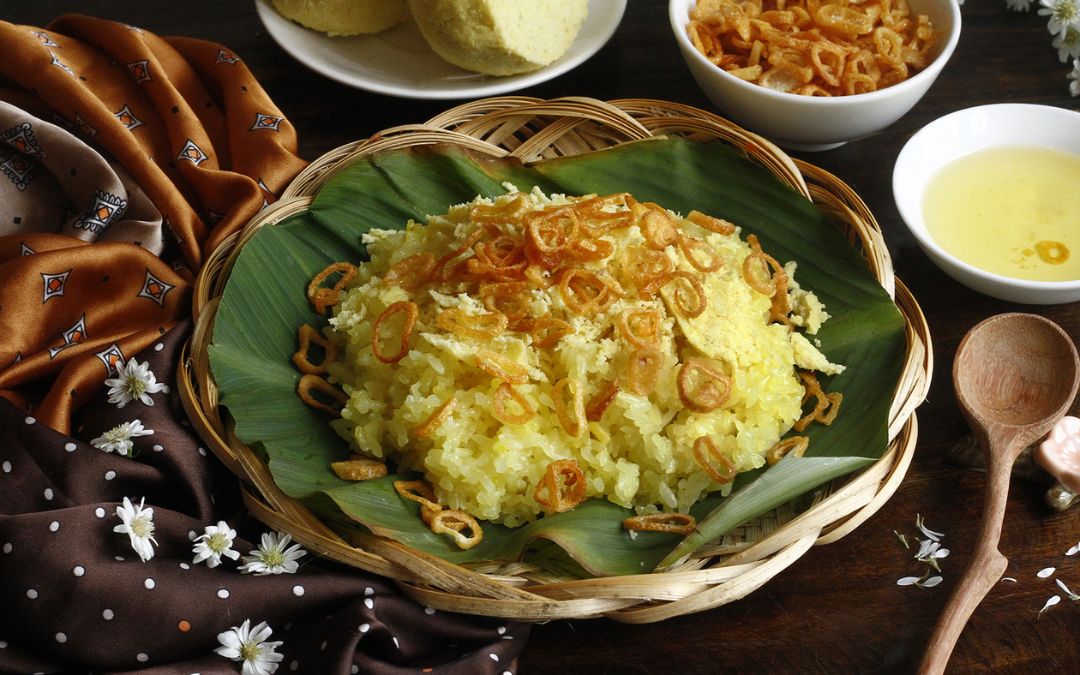
No visit to Hanoi is complete without sampling Banh Cuon – delicate steamed rice rolls filled with minced pork and wood ear mushrooms, topped with fried shallots and fresh herbs. Banh Cuon Gia An, with multiple locations throughout the city, is a beloved spot to savor this dish.
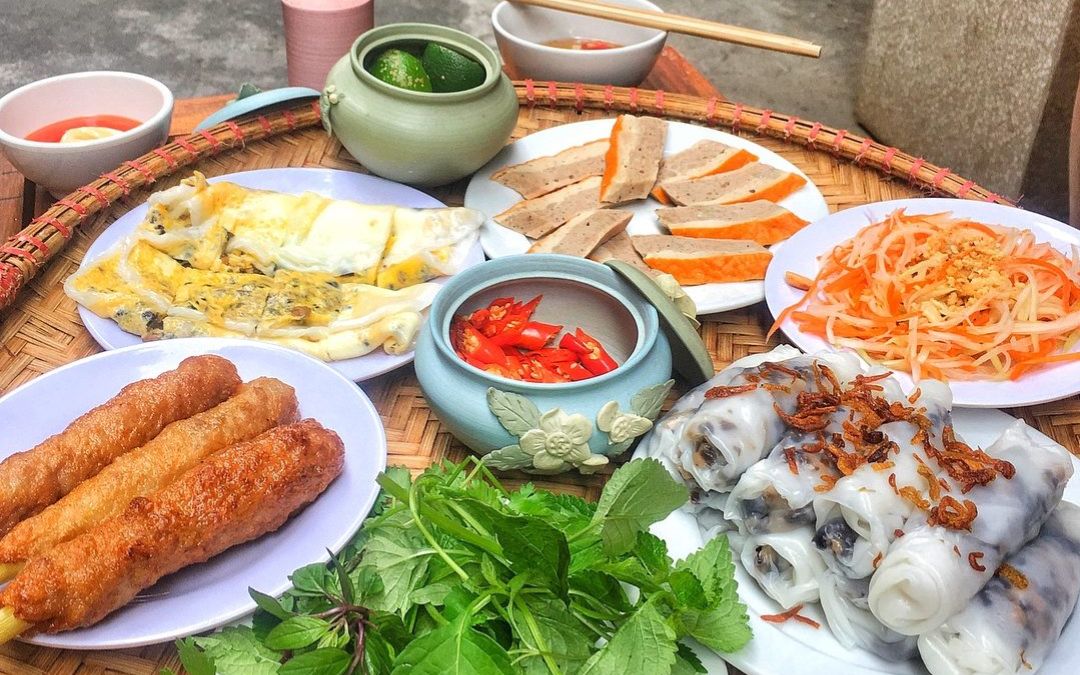
To conclude your culinary journey, indulge in Ca Phe Trung (egg coffee), a rich and creamy beverage made with egg yolks, sugar, condensed milk, and robust Vietnamese coffee. Ca phe Giang (39 Nguyen Huu Huan, Hoan Kiem, Hanoi) is credited with inventing this unique drink and remains a favorite among locals and tourists alike.
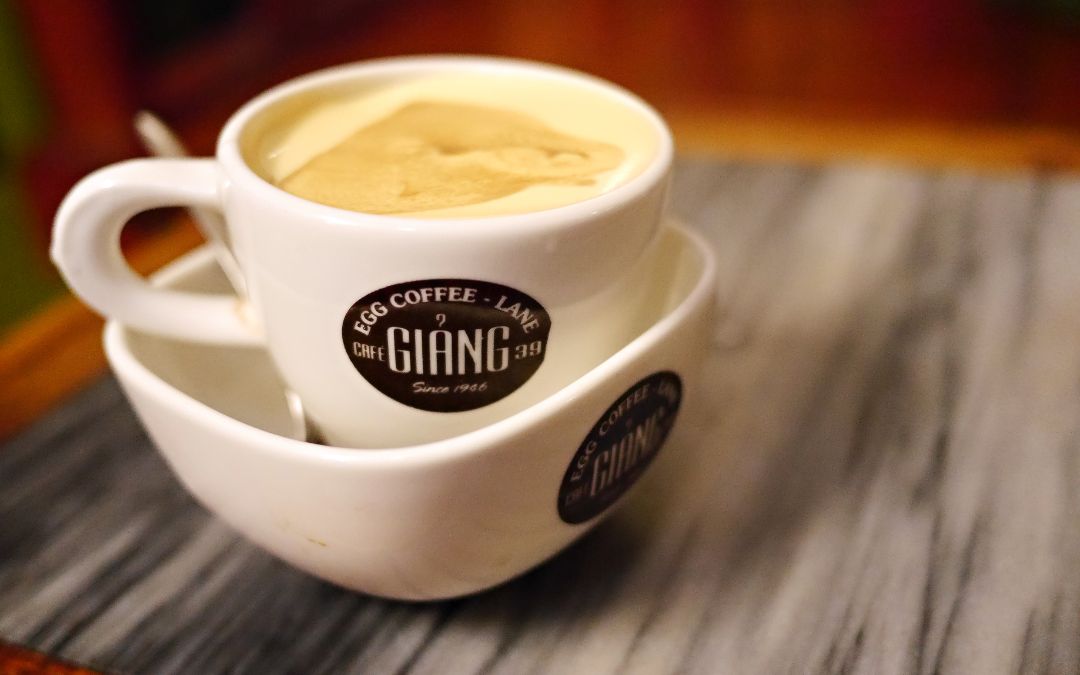
Dong Xuan Market, Hanoi’s largest indoor market, is a bustling hub where locals shop for everything from fresh produce to textiles. Wandering through its aisles offers a glimpse into the daily life of Hanoi’s residents. Adjacent to the market, numerous street food stalls serve up authentic dishes, providing an immersive culinary experience that Vietnam culinary tours often highlight.
Alternatively, a visit to Train Street offers a unique setting for street food enthusiasts. Here, vendors set up shop along the railway tracks, and patrons enjoy their meals just inches away from passing trains. This thrilling experience combines the excitement of train spotting with the pleasure of savoring local delicacies.
> Explore More: Top 11 Night Markets to Travel Vietnam with Family – Safe and Fun Spots
Iconic Dishes with Culture
- Cha Ca La Vong
Cha Ca La Vong stands out as one of Hanoi’s most distinctive culinary treasures, carrying with it centuries of tradition. The dish traces its origins to the Doan family in the 19th century, who first introduced it at their home on 14 Hang Son Street. Its name, “La Vong”, pays homage to Jiang Ziya, a legendary fisherman revered for patience and wisdom.
Today, diners savor turmeric-marinated catfish grilled over charcoal, served sizzling in a pan with generous amounts of fresh dill and scallions. The flavors come together when paired with rice noodles, crunchy peanuts, and a savory dipping sauce, creating an experience that is both historical and deeply local.
The most highly-recommended spot to try this iconic dish is Cha Ca Thang Long at 2D Duong Thanh, Hoan Kiem, Hanoi.
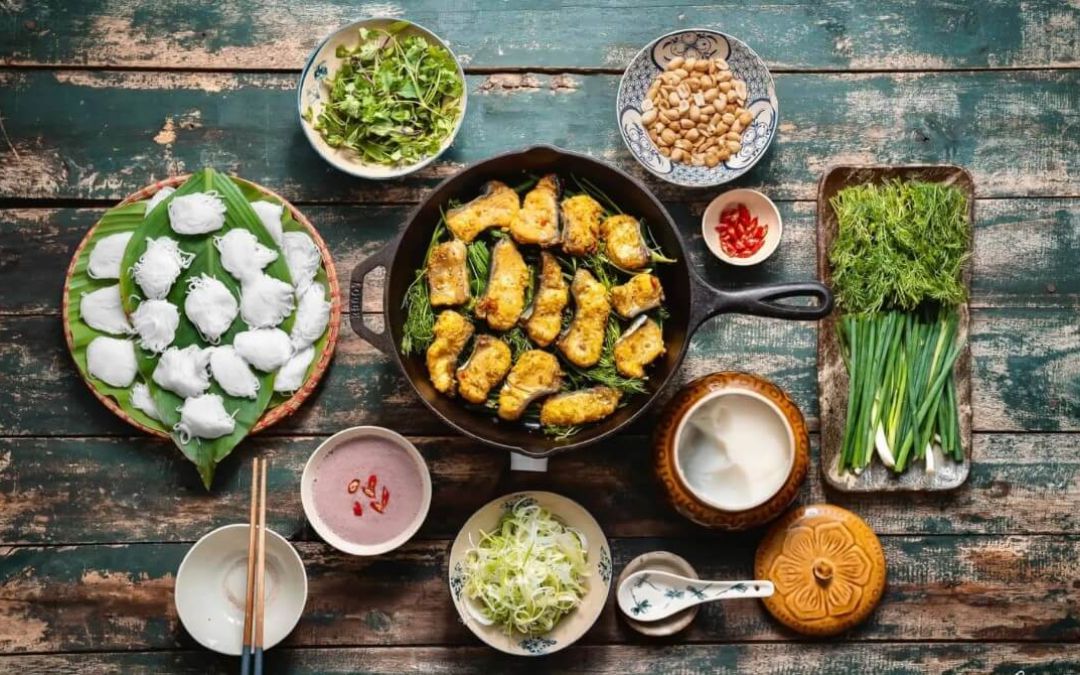
- Bun Thang
Equally refined, Bun Thang reflects Hanoi’s artistry in transforming humble ingredients into a dish of sophistication. Traditionally prepared after Tet (Lunar New Year), it makes use of leftover chicken, pork, and eggs, elevated into a clear, fragrant noodle soup.
The bowl presents a delicate arrangement: thin rice vermicelli, shredded chicken, fine omelette strips, and pork slices, finished with herbs and a light, aromatic broth. Each spoonful demonstrates Hanoi’s ability to balance texture and flavor, showcasing a level of culinary finesse that speaks to the ingenuity of its chefs.
Bun Thang Ba Duc at 48 Cau Go Street, Hoan Kiem, Hanoi is widely acclaimed as a top spot to savor this dish.
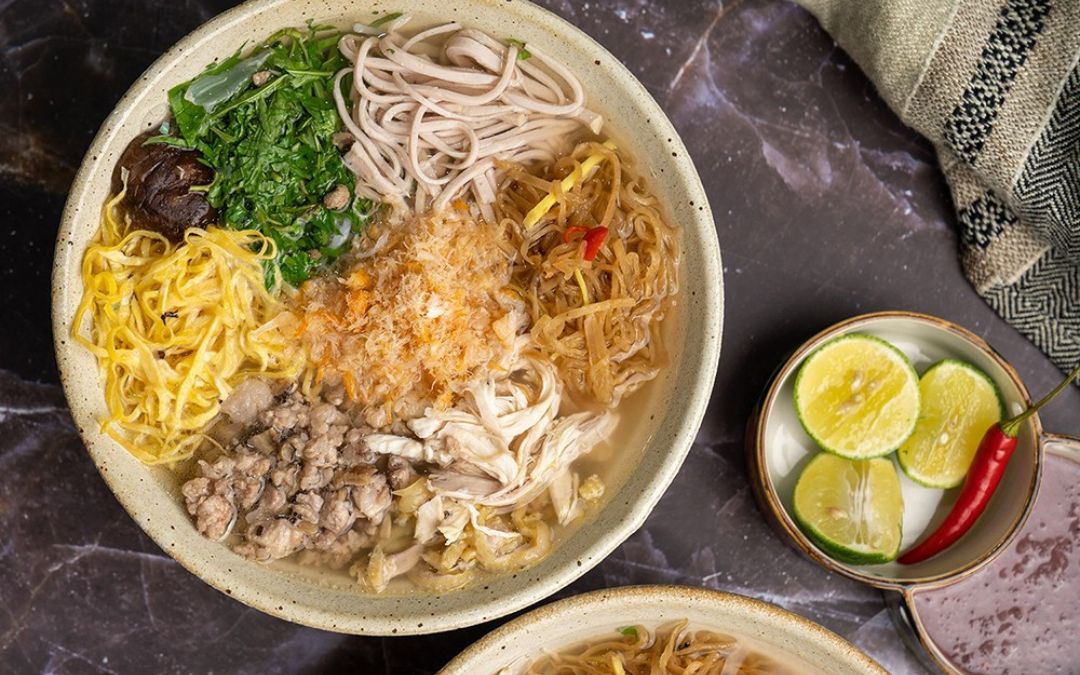
Elevated Dining Experience
- Gia – 61 Van Mieu, Dong Da, Hanoi
Gia is a Michelin-starred restaurant that reimagines traditional Vietnamese cuisine with a contemporary approach. Seasonal ingredients are at the heart of every dish, presented in an elegant and artistic style that highlights both flavor and visual appeal.
- Hibana by Koki – 11 Le Phung Hieu, Hoan Kiem, Hanoi
Hibana by Koki brings together Japanese precision and Vietnamese inspiration. This Michelin-starred dining spot is celebrated for its meticulous attention to detail, balance of textures, and harmonious flavor combinations, making it one of Hanoi’s most refined culinary experiences.
- Tam Vi – 4B Yen The, Ba Dinh, Hanoi
Tam Vi offers a modern interpretation of classic Vietnamese dishes while staying rooted in tradition. With its focus on locally sourced produce and thoughtful plating, this Michelin-recognized restaurant provides diners with a taste of Vietnamese culture elevated to fine dining standards.
Central Vietnam – Hue, Da Nang & Hoi An
Imperial Comfort in Hue
Bun Bo Hue carries the spirit of Vietnam’s former imperial capital, offering a broth that is both spicy and fragrant with lemongrass. The base comes from slow-simmered pork bones and beef shank, creating depth and warmth in every spoonful. Served with rice vermicelli, tender beef slices, pork, and occasionally congealed pork blood, the soup is finished with herbs and a squeeze of lime.
For travelers seeking authenticity, Bun Bo Me Keo (20 Bach Dang, Hue) is a decades-old spot that has become a culinary staple in the ancient capital.
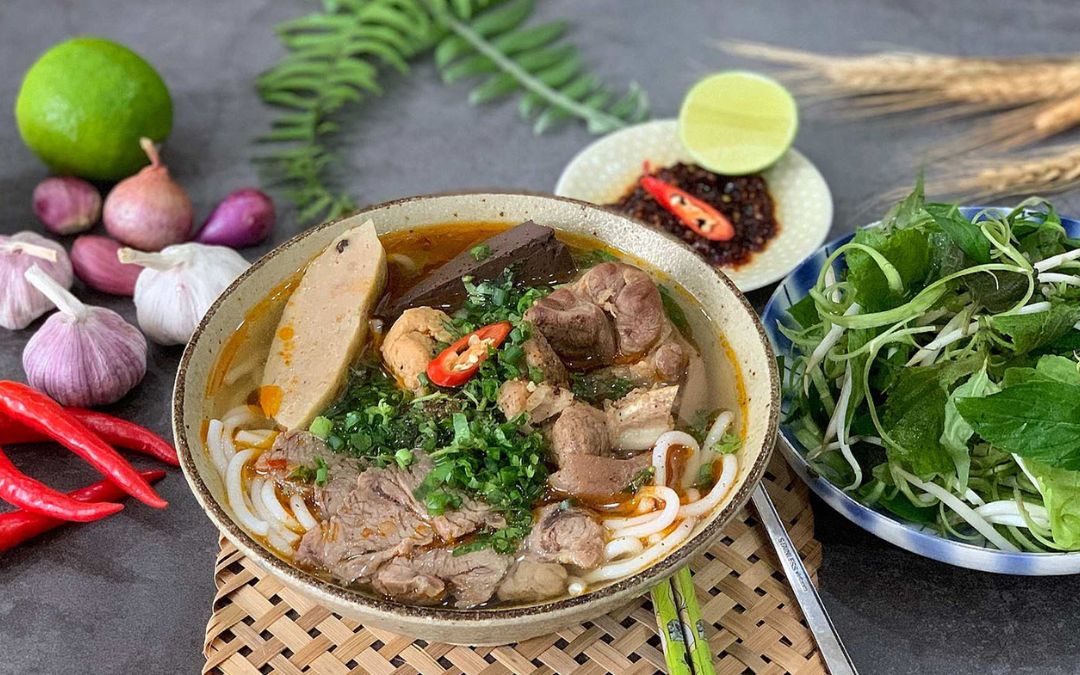
Banh Beo reflects the delicacy of Hue’s cuisine through steamed rice cakes topped with minced shrimp, crispy shallots, and scallion oil. Presented in petite bowls, the dish invites diners to drizzle fish sauce before savoring its soft, savory layers. An authentic stop for this specialty is Cho Dong Ba (02 Tran Hung Dao, Phu Hoa, Hue), where countless stalls serve this delicacy with different toppings in a lively, traditional market setting.
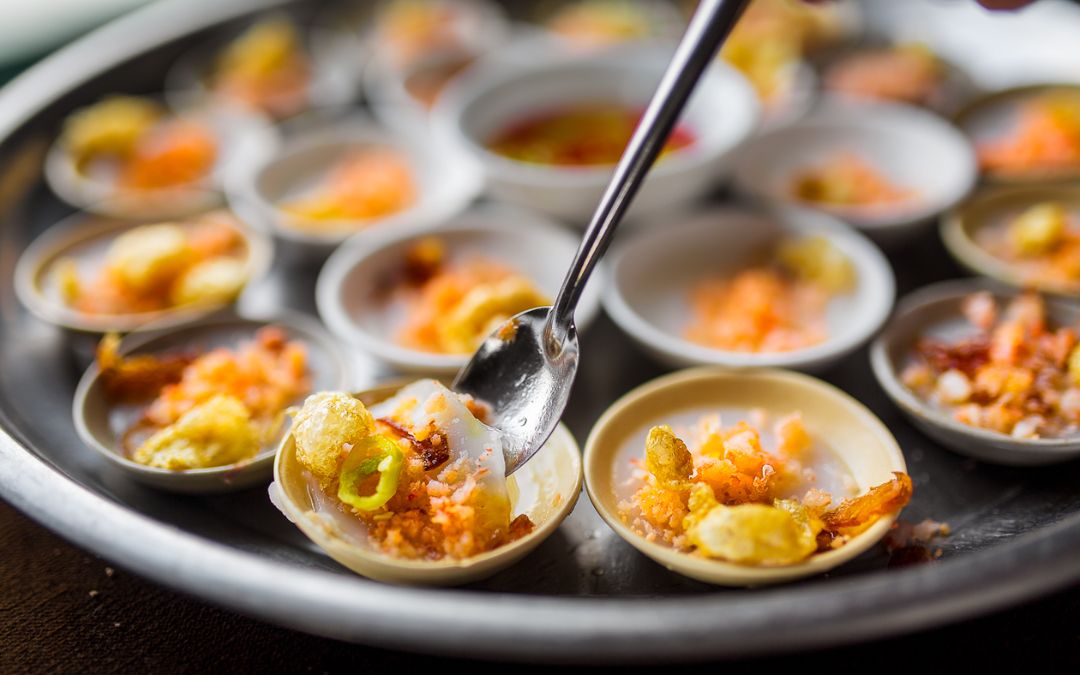
Handcrafted Fare in Hoi An & Da Nang
Cao Lau stands out as Hoi An’s most iconic noodle dish, defined by its thick, springy noodles created from rice soaked in lye water mixed with ash from special trees. Topped with slices of marinated pork, fragrant herbs, and crispy rice crackers, the dish blends texture with flavor in every bite. Served with just a hint of broth, it strikes a balance between a dry noodle dish and soup.
Cao Lau Thanh (26 Thai Phien, Minh An, Hoi An) is often praised for keeping the traditional cooking that locals have loved for generations alive so that participants in Vietnam culinary tours can have a truly real experience.
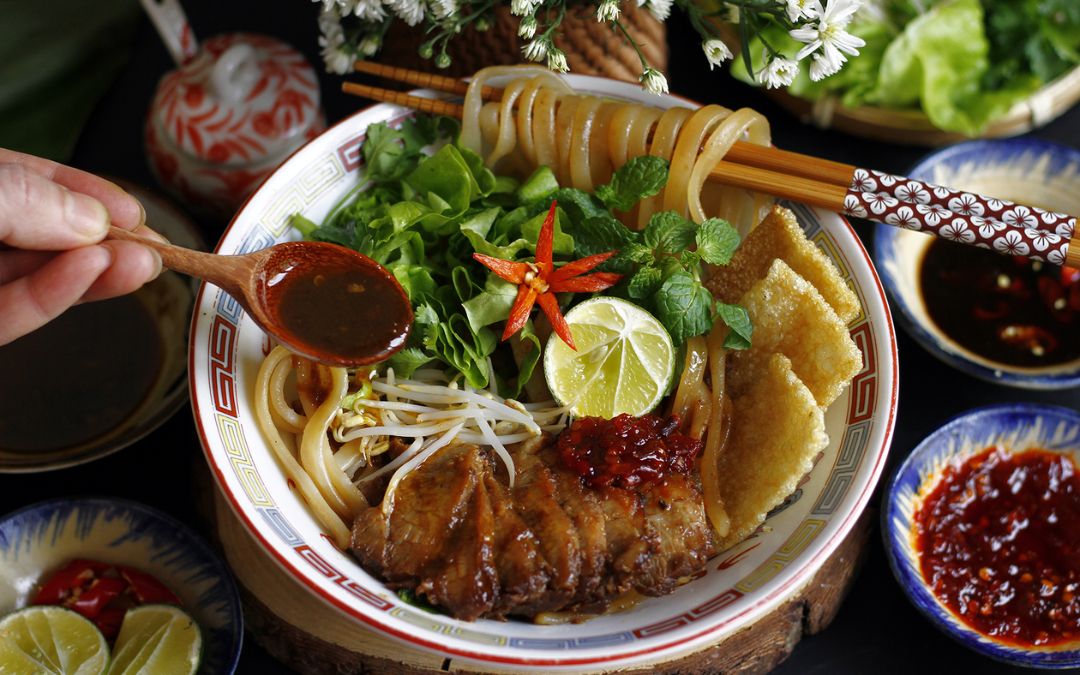
Originating from Quang Nam province, Mi Quang is recognized by its golden turmeric-tinted noodles and its modest yet flavorful broth. Toppings usually include a mix of pork, shrimp, quail eggs, and a bouquet of fresh herbs, creating a dish that is both hearty and vibrant.
To savor its full character, head to Mi Quang Khong Gian Xanh (687 Hai Ba Trung, Hoi An), a well-loved spot known for its aromatic broth and generous selection of toppings.
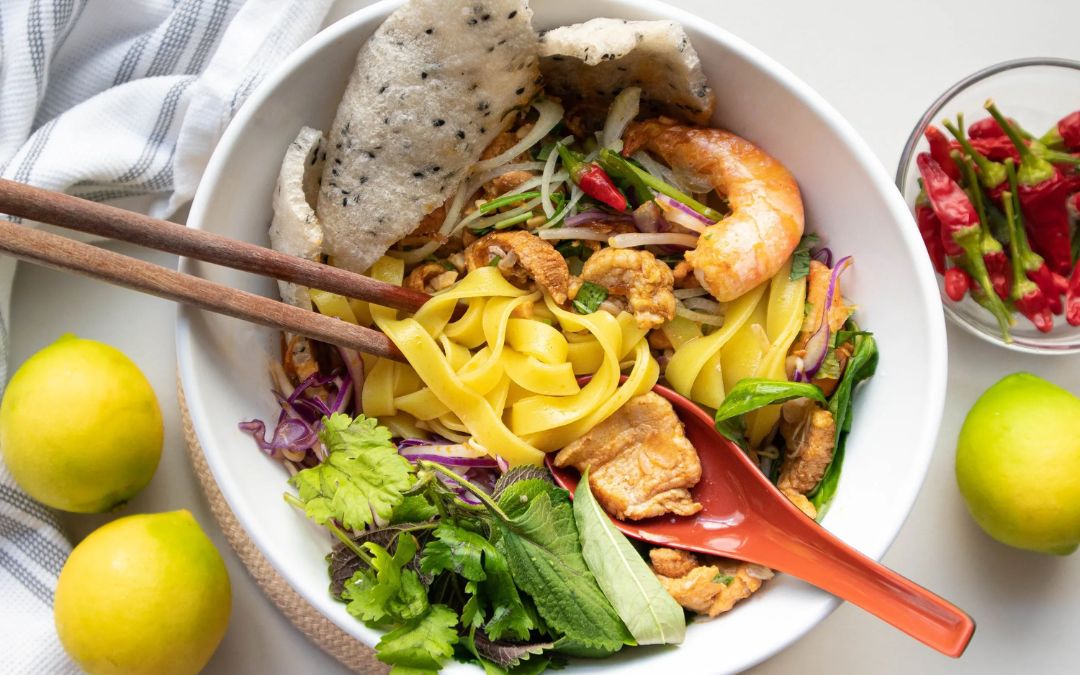
Fine Dining Fusion with Local Soul
- Le Parfum – 5 Le Loi, Hue
Nestled inside the luxurious Azerai La Residence, Le Parfum marries French and Vietnamese culinary traditions, serving dishes like duck confit seasoned with local spices and pan-seared foie gras with berry compote, all complemented by a refined Art Deco ambiance.
- Ancient Hue Gallery Cuisine – 104/47 Kim Long, Hue
Set within a restored garden residence, this fine-dining space delivers artistic reinterpretations of royal banquets – imagine lacquered tables, mother-of-pearl carvings, and sophisticated presentations of Nguyen-era specialties that awaken both palate and history.
- Nen Restaurant – 16 My Da Tay 2, Ngu Hanh Son, Da Nang
A sensory journey through Vietnam via tasting menus, Nen offers deconstructed classics like Banh Canh soup spoon bites and passion fruit–accented duck breast, artfully presented in a minimalist, elegantly modern setting.
- SI Dining – 01 Giang Chau 2, Ngu Hanh Son, Da Nang
Chic and atmospheric, SI Dining focuses on modern Vietnamese cuisine infused with global flair—signature dishes include lemongrass jus–braised short rib and Wagyu tartare with Vietnamese herbs, all served in a refined, intimate space.
- Mango Rooms – 37 Phan Boi Chau, Cam Chau, Hoi An
Run by a German chef who sources ingredients from local farms and fishermen, Mango Rooms is celebrated for soulful fusion dishes. Here, such unexpected blends of Japanese, Vietnamese, and Spanish flavors are served in a lantern-lit riverside setting full of warmth and storytelling.
- Art Space Restaurant – 01 Pham Hong Thai, Cam Chau Hoi An
Art Space is a stylish mix of a restaurant and an art studio. They serve creative food like 3D-printed desserts, sous-vide Iberico ribs, and wood-fired pizzas, all set against an industrial-chic wall of modern Vietnamese art.
Southern Vietnam – Ho Chi Minh City
Street Food Culture
Featured in most Vietnam culinary tours, Saigon’s Banh Mi transcends the ordinary sandwich. And, the best incarnation is found at Banh Mi Huynh Hoa (26 Le Thi Rieng, District 1, HCM City). Thick layers of cold cuts, pâté, mayonnaise, pickled vegetables, and pork floss come tucked within a perfectly crisp baguette. Its indulgent heft has earned cult-status and even international recognition as one of the world’s most outstanding sandwiches.
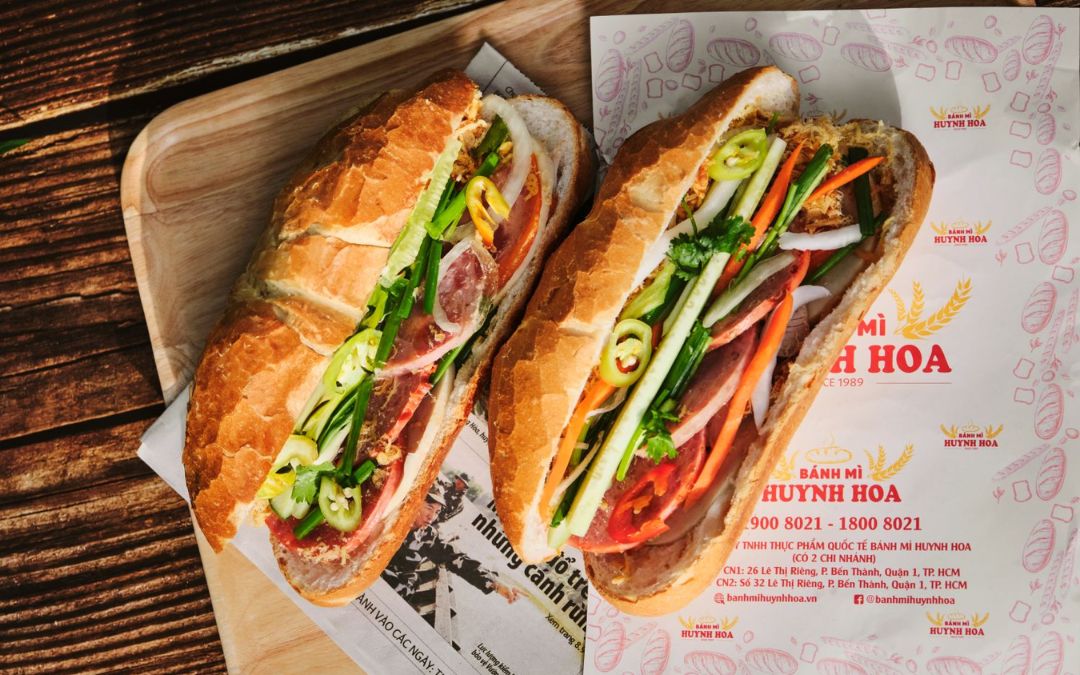
Com Tam feels equally profound, especially when tasting its signature broken rice composition: grilled pork chops, shredded pork skin, and slices of steamed omelette, all enhanced by scallion oil and fresh vegetables. This dish is so embedded in Saigonese culture that locals say, “People here eat Com Tam like Hanoi people eat Pho”. A top destination to enjoy this iconic dish is Com Tam Ba Ghien at 84 Dang Van Ngu, Phu Nhuan, HCM City.
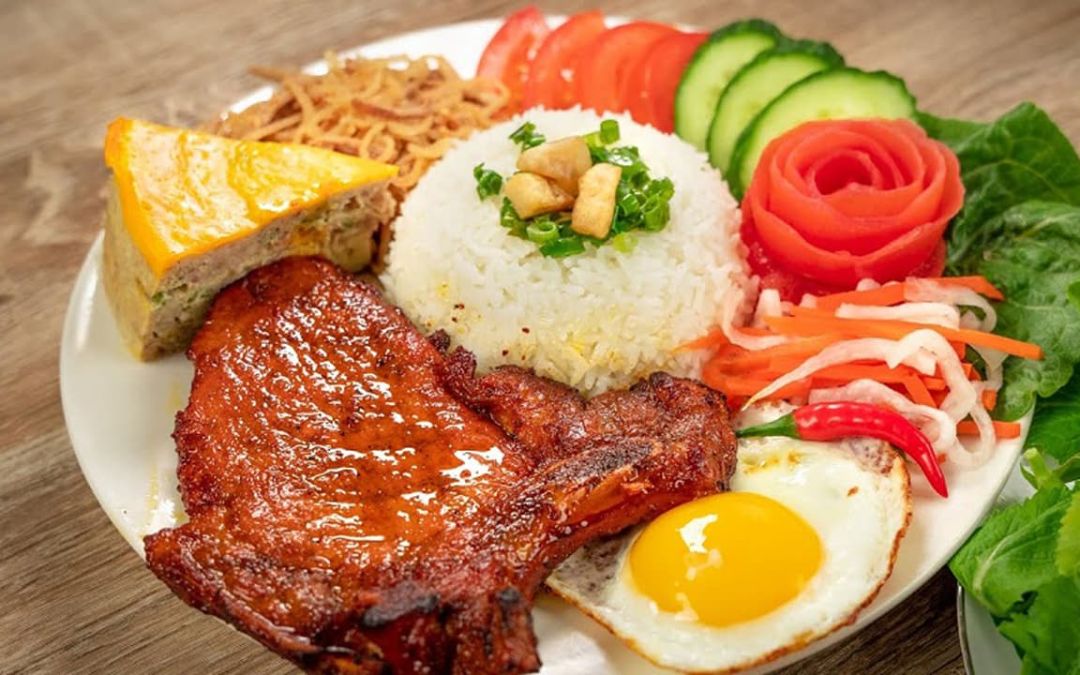
At Banh Xeo 46A (46A Dinh Cong Trang, District 1, HCM City), the theater of sizzling turmeric pancakes unfolds: each golden, crispy crepe is filled with shrimp, pork, and bean sprouts, then wrapped in lettuce accompanied by fragrant herbs, and dipped in tangy nuoc cham. What an immersive experience rooted in tradition and high artisanal execution!
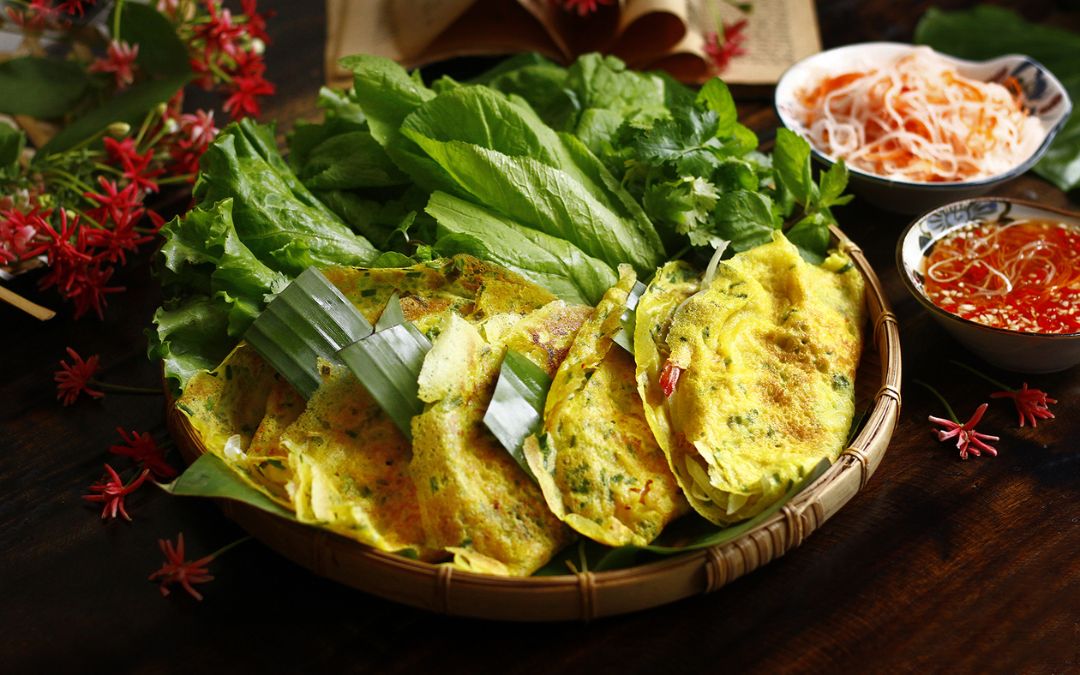
Finally, Che Ba Ba offers a warm embrace in a bowl—its coconut-milk broth envelops tender cubes of taro, cassava, sweet potato, and tapioca pearls in a soulful dessert that evokes both nostalgia and sumptuous comfort in each spoonful.
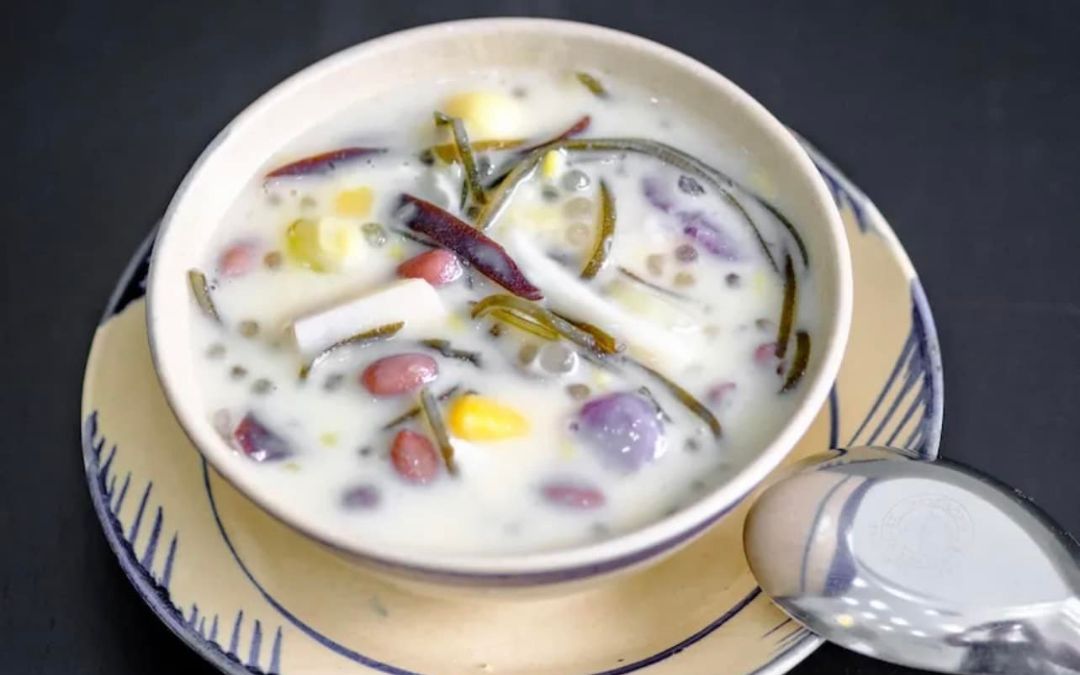
Here are the popular culinary spots:
- Ho Chi Minh City’s Ben Thanh Market pulses with energy from dawn and draws both locals and travelers, making it a staple of Vietnam culinary tours. Strolling through its bustling aisles reveals a microcosm of the city’s culinary heritage, where traditional Vietnamese recipes are preserved and celebrated amidst lively commerce and lively social interactions.
- In Chinatown (Cho Lon), the streets tell stories of centuries-old Chinese-Vietnamese traditions, reflected in aromatic food stalls and family-run markets. Wandering through this neighborhood, visitors encounter a rich tapestry of flavors and cultural nuances, making it a destination where gastronomy and history intertwine seamlessly.
Motorbike Snacking Adventure
Exploring Saigon’s vibrant street food scene by motorbike offers an immersive experience into the city’s rich culinary tapestry. Navigating through bustling districts like District 1 and District 3, travelers can indulge in a variety of local snacks, each with its unique flavors and textures.
In District 1, near the Notre Dame Cathedral and Turtle Lake, Banh Trang Tron stands out as a popular choice. This Vietnamese rice paper salad is tossed with dried shrimp, quail eggs, peanuts, and fresh herbs, offering a delightful mix of flavors and textures. Another must-try is Banh Trang Nuong, often referred to as Vietnamese pizza, which features crispy rice paper topped with egg, dried shrimp, and green onions, grilled to perfection.
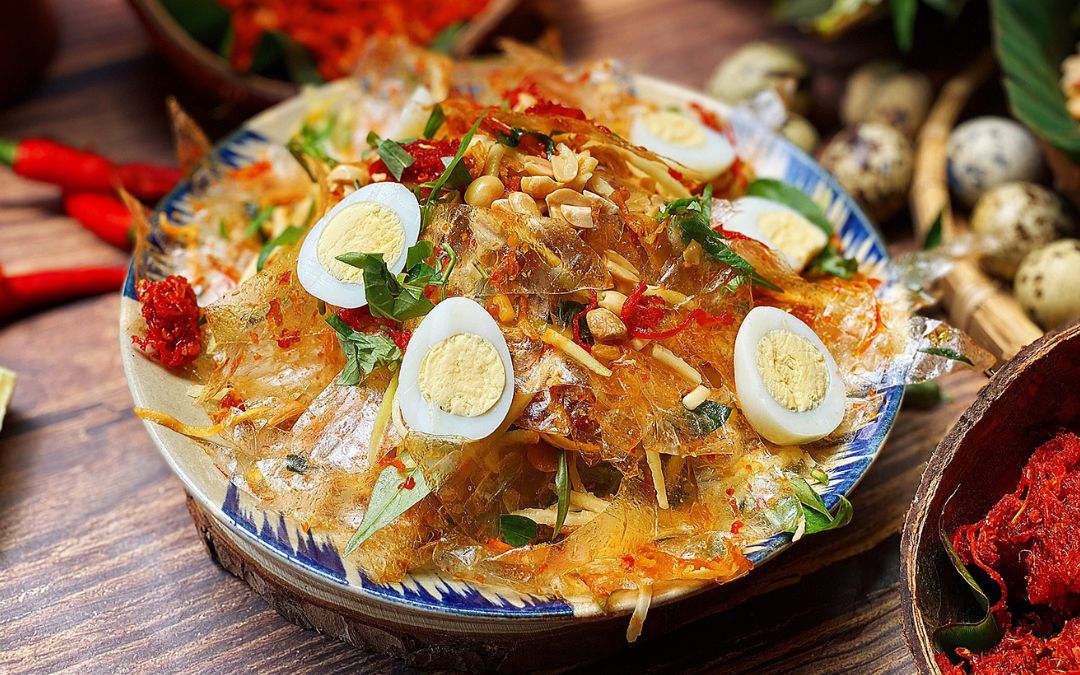
Moving to District 3, Bot Chien, or fried rice flour cakes, are a beloved snack. These golden-brown cubes of rice flour and tapioca starch are fried until crispy and served with a side of egg and green onions, creating a savory treat that’s both satisfying and nostalgic.
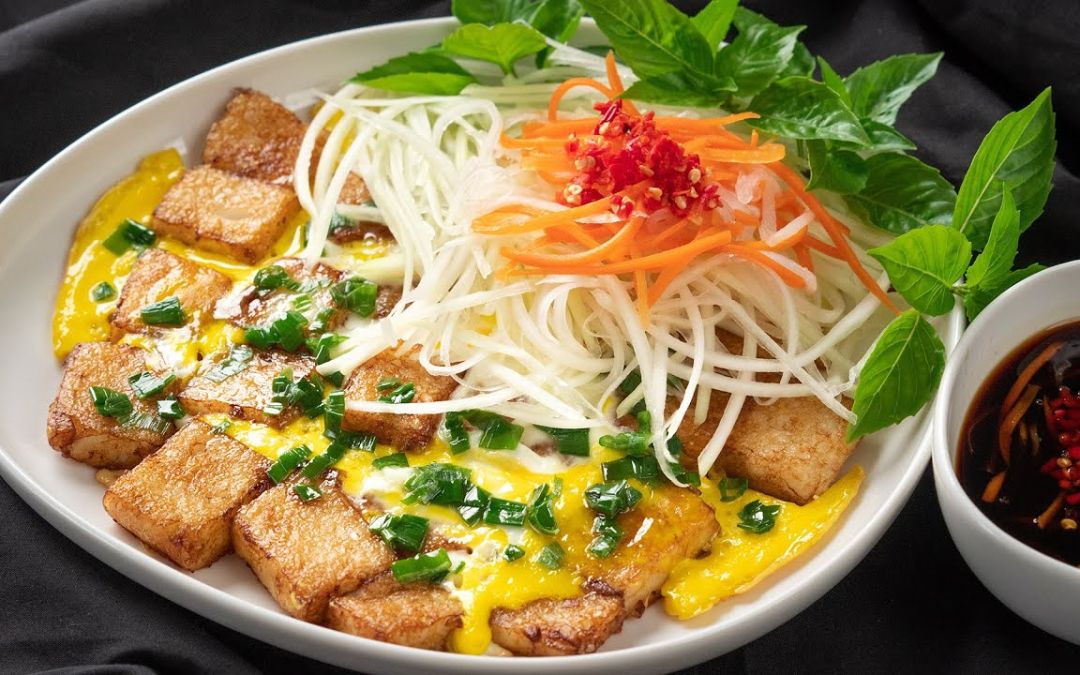
Meanwhile, Goi Cuon can be savored along streets in District 7, where family-run stalls serve fresh spring rolls filled with shrimp, pork, vermicelli, and herbs, accompanied by flavorful peanut or hoisin dipping sauce.
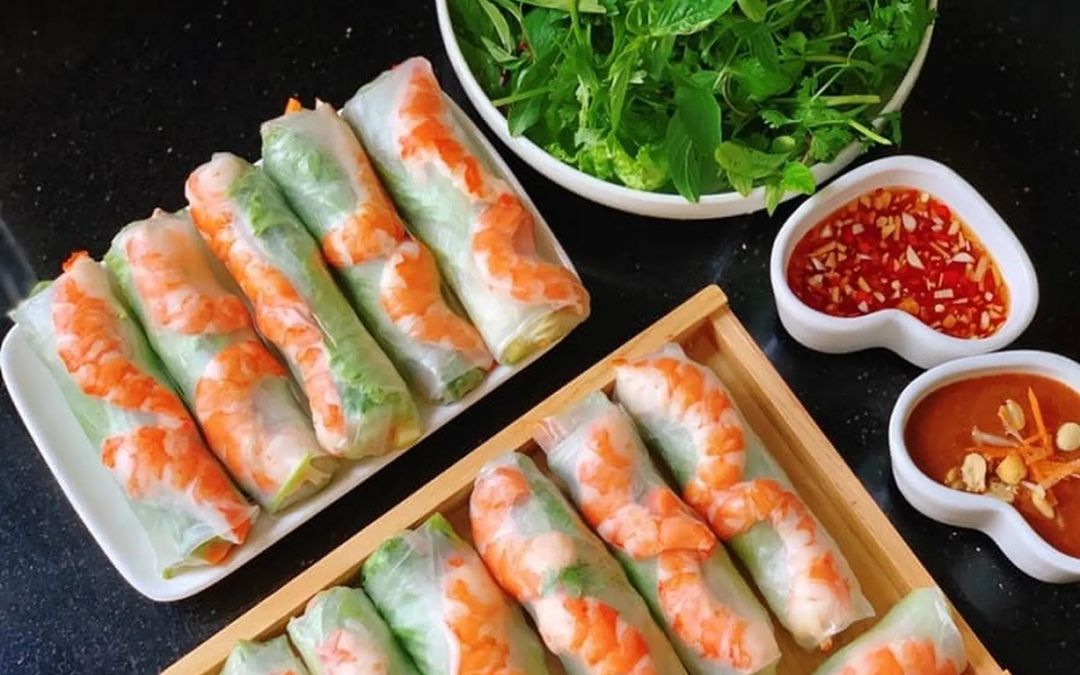
Urban Gastronomy in Saigon
- The Deck Saigon – 38 Nguyen U Di, Thu Duc, Ho Chi Minh City
Located along the Saigon River, this elegant venue transforms Vietnamese ingredients using international culinary techniques, and diners can enjoy sophisticated dishes while taking in sweeping river views.
- Quince Saigon – 37bis Ky Con, District 1, Ho Chi Minh City
This restaurant highlights modern Vietnamese cuisine through seasonal ingredients and inventive presentations, allowing guests to experience the delicate harmony of local flavors.
- NGON Restaurant – 160 Pasteur, District 1, Ho Chi Minh City
Traditional street food classics are brought indoors at this refined venue, where iconic dishes like Bun Thit Nuong and Goi Cuon can be enjoyed comfortably without losing their authentic taste.
- EON51 Fine Dining – 02 Hai Trieu, District 1, Ho Chi Minh City
Perched atop Bitexco Tower, this restaurant offers panoramic city vistas and presents upscale interpretations of Vietnamese and Asian cuisine, providing a memorable urban culinary experience.
Sample Itineraries for Vietnam Culinary Tours
Duration: 3–4 Days
- Day 1: Sample Hoi An street food at Banh Mi Phuong, Cao Lau Thanh, and Gieng Ba Le.
- Day 2: Take a cooking class at Red Bridge Cooking School and explore Hoi An Central Market before dining at Morning Glory Restaurant.
- Day 3: Travel to Hue and enjoy Com Hen and Banh Beo at Cung Dinh Restaurant with dinner at Tinh Gia Vien.
- Day 4: Indulge in a royal multi-course meal at Hoang Phu Restaurant highlighting Hue’s imperial cuisine.
Duration: 7–10 Days
- Day 1: Explore Hanoi Old Quarter, tasting Pho at Pho Gia Truyen and Bun Cha at Bun Cha Huong Lien with egg coffee at Ca Phe Giang.
- Day 2: Visit Dong Xuan Market and join a cooking class at Hanoi Cooking Centre, then dine at Quan An Ngon.
- Day 3: Fly to Hoi An and take an evening street food tour with Cao Lau, Mi Quang,… on Cong Nu Ngoc Hoa Street.
- Day 4: Participate in a Hoi An cooking class at Red Bridge Cooking School and explore Central Market before dining at Morning Glory Restaurant.
- Day 5: Travel to Hue and taste Com Hen and Banh Beo at Cung Dinh Restaurant with dinner at Tinh Gia Vien.
- Day 6: Experience a royal multi-course meal at Hoang Phu Restaurant.
- Day 7: Fly to Ho Chi Minh City and sample Banh Mi Huynh Hoa and Com Tam Ba Ghien and take a food tour in Ben Thanh Market.
- Day 8: Explore Cho Lon (Chinatown) and join a cooking class at The Vietnam Cookery Centre, then dine at Anan Saigon.
- Day 9: Visit Café Apartment and enjoy fine dining at The Deck Saigon with contemporary Vietnamese cuisine and river views.
>> Read More: Top 9 Tasty Food Souvenirs From Vietnam
Smart Travel Tips for Culinary Explorers
- Plan your dining hours: Street food vendors in Vietnam operate at specific times, often from early morning to late evening, so scheduling meals strategically ensures access to the freshest and most flavorful dishes.
- Choose busy stalls: High customer turnover usually signals popular and fresh offerings, making these spots ideal for authentic culinary experiences.
- Ask for recommendations: Engaging with vendors about their specialties provides insider knowledge and can lead to discovering hidden gems off the typical tourist path.
- Learn basic phrases: Using simple Vietnamese expressions such as “Cảm ơn” (Thank you) or “Xin chào” (Hello) fosters respect and can enhance interactions with locals.
- Stay hydrated: Vietnam’s tropical climate and the spiciness of many dishes make drinking plenty of bottled water essential to remain comfortable throughout the day.
- Avoid tap water: Opt for bottled water to reduce the risk of stomach discomfort while traveling.
- Maintain hand hygiene: Carry hand sanitizer or wet wipes, especially before sampling street food, to ensure a safe dining experience.
- Respect local customs: Observe Vietnamese dining etiquette, including modest tipping and avoiding loud conversations, to show cultural sensitivity.
- Join cooking classes: Participating in hands-on classes deepens understanding of traditional techniques and provides a richer connection to Vietnam’s culinary heritage.
Final Words
Vietnamese cuisine is a continuous revelation, enchanting not only locals but also international travelers. Even residents rarely tire of their traditional dishes, while visitors find themselves immersed in a wide range of flavors that span the country’s S-shaped geography.
With these insights above, travelers can prepare their palates and embark on a journey through Vietnam’s dynamic food landscape. For those unsure where to begin, Asia Trip Deals provides curated Vietnam culinary tours that guide visitors seamlessly through these extraordinary gastronomic experiences. Contact us now to start exploring the rich and diverse flavors of Vietnam!
